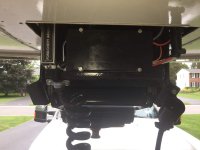To be clear, and anymore then this should be taken to PM's, I did not 'rip your opinion'.
You posted a quote from someone else and I countered that is was incorrect and didn't follow industry standards. And it is also the improper way to clean brakes and rotors /drums.
I did not make up the procedure I posted above.
If you were to copy just the first two lines and do a google search you would see that I pretty much copied verbatim the standard.
In fact, since I see you have a Corvette, the second hit oddly enough in my google search, is from the Corvette forum

Burnishing is not meant to clean off the parts, they should be clean when installed.
Burnishing is the process of properly conditioning the brakes and drums/rotors for the best service and long life.
And as much as I'd like to get into not using "matched axle sets of pads, calipers and rotors" I will just go with the assumption that maybe it just isn't that critical on trailers.

